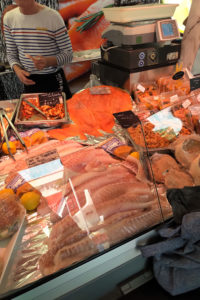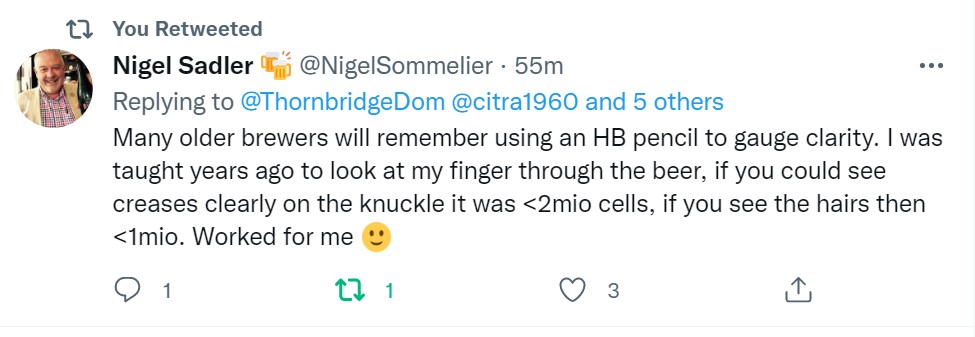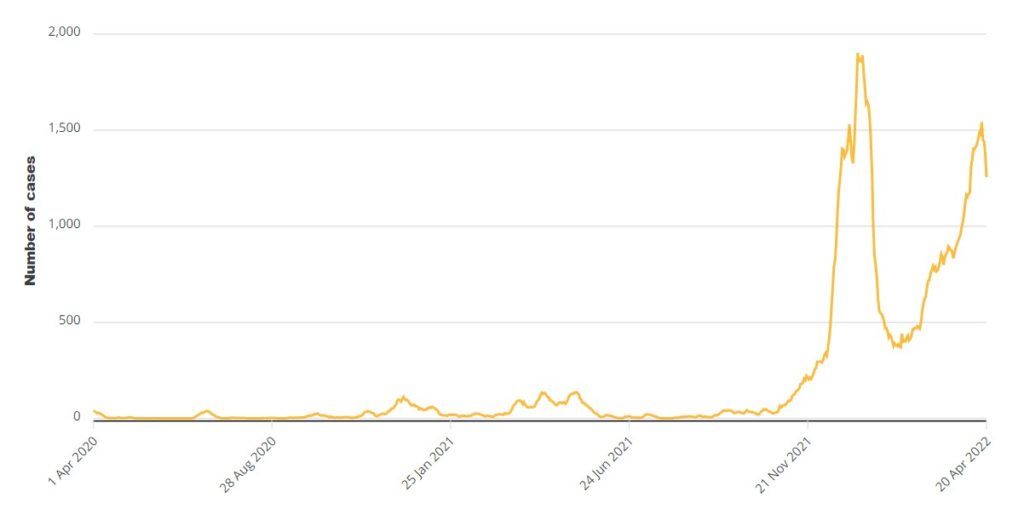 Well, what a few weeks it has been. After the mourning period for Herself among other things, Hurricane Fiona comes along and hammers into family and friends out east where I grew up. Don’t know yet what’s happened to our old house and garden. Despite the loss of life and damage to property, there was in some areas an attitude that we bear these burdens and move on. Example: Krystle Collier’s home in southwest Newfoundland’s Port Aux Basques was destroyed but she found her White Claw Seltzers still in the fridge. Go Krystle!
Well, what a few weeks it has been. After the mourning period for Herself among other things, Hurricane Fiona comes along and hammers into family and friends out east where I grew up. Don’t know yet what’s happened to our old house and garden. Despite the loss of life and damage to property, there was in some areas an attitude that we bear these burdens and move on. Example: Krystle Collier’s home in southwest Newfoundland’s Port Aux Basques was destroyed but she found her White Claw Seltzers still in the fridge. Go Krystle!
Beer news? First up, Martyn wrote an interesting piece for Pellicle this week about the revival of Gales Prized Old Ale:
This October the new edition of Prize Old Ale will be bottled and put on sale, each bottle containing a tiny, homoeopathic quantity of every other batch of POA going back to the reign of King George V. Henry, and his masters, the Japanese brewing giant Asahi (which acquired Fullers, and with it Dark Star, in 2019) hopes that drinkers are now knowledgeable enough about mixed-fermentation beers, and what they have to offer, to appreciate Prize Old Ale, which—in the UK, at least—they were probably not when Fuller’s first relaunched it in 2007.
 My own tiny special reserve, illustrated to the right as Stan himself would want, has been offered up as a bio-pool refresher should the team need it. 25 years old now, I don’t dare open it. I bet Krystle Collier would, though. I’d let her.
My own tiny special reserve, illustrated to the right as Stan himself would want, has been offered up as a bio-pool refresher should the team need it. 25 years old now, I don’t dare open it. I bet Krystle Collier would, though. I’d let her.
By the way, a bit to the east, did you know that the Beer Party is polling 13% in the Austrian Presidential campaign.
Back in Britain, there has been much talk about the proposed rebranding of cask ale as fresh ale. This seems to be another go as something that has had a few goes and reminds me a lot of the US craft beer botches such as “crafty” and “true craft” and, yes, “independent” beer. But the issues at play are distinct – central to which is price. Jessica Mason framed it succinctly as the Forces of Timbo v. the Forces of Premiumization:
Wetherspoons Tim Martin gets slammed for devaluing beer and using one price for all, despite research showing people are seeking out premium drinks…
Cookie‘s on Team Timbo BTW. And why not? Most people are not wanting to pay more for beer, especially in these times:
BCA’s head of pubs Graham Manwaring said that as well as the rising cost of brewing their beers at the BCA brewery in Upper Gornal, they were also facing higher costs from beer suppliers like Coors and Carlsberg Marston’s. “We are going to have a careful look at our prices to see how to balance it for customers and to maintain the business.” He said the level of rise had yet to be determined but was expected from mid-October. “It is not going to be easy for anybody. Everyone know pubs are going to have to raise prices. “It is a very difficult time to be trading,” he added.
Hard to argue that the one economic opportunity right now that cask should be leaning on hard is how cheap it is – not upselling it. (But do consultants really want to be seen consulting in favour of discount offerings?) One other more conceptual problem, of course, is this: there is already fresh ale at every brewery taproom as well as that other sort of beer, Fresh Hop Ale. The new phrase fails to distinguish meaningfully. And everyone already knows was cask is. It’s that. “Fresh” is a bunch of things. And the real problem is that many folk know full well what cask is and still aren’t that interested even at a low price. Speaking of which, Boak and Bailey found another thing in the British pub that’s not all that interesting:
We didn’t particularly mind eating a mediocre burger when it’s less than a tenner. When it’s more than £15, we expect it to have a bit of something about it. We completely understand that when everything is going up, you need to charge more to stay in the same place. As we explored in a post a few months ago there are thresholds at which you will lose customers, particularly when they’re also grappling with the increasing cost of living. Based on our observations, this is already happening.
Changing topics, eleven and a half years ago, Andy Crouch proclaimed “A New Era of Beer Writing” was upon us:
In the stead of groundbreakers such as Michael Jackson, Fred Eckhardt and others, many beer writers have been content to gently tread within the outlines of their predecessors’ sizable but not all-encompassing footprints, rarely venturing into new territories. That means producing tasting notes, and sometimes regurgitating questionable beer and style histories. For those of us who write about beer for a living, even for BeerAdvocate magazine, we need to do more. We need to write about people and place as much as we do about product. In focusing on special releases, limited-batch series and the novelties that comprise so much of today’s beer writing, writers often fail to capture the true essence of the characters and spirit driving craft beer’s unstoppable ascension. Too often, writers craft never-ending odes to their favorite breweries, while skirting over problem points.
I mention this as there was a bit of a huff after the NAGBW awards were announced. Jeff considered the evidence indicated that “[t]en years ago when I judged, there was a ton of very mediocre stuff from small papers around the US. You’re right that we have lost a lot of those outlets, but the quality of work is WAY higher” while I suggested that there are “fewer other outlets for paid writing, very few blogs,* very few books compared to 6, 8, 10 years ago.” We are both probably right in a meaningful sense – but I think Andy was also right from his perspective a bit more than 6, 8, 10 years ago.
Comfortable and careful writing is not good. Covers up stuff.** Remember: even if the subject matter has narrowed or even in part just shifted – shifted along with the politics even – the writing can still be comfortable and careful. You know what isn’t daring anymore? Positive repetitive blah however well written and layered with gorgeous photos. And do we need another style guide? Or more blocky kitty cat newbie cartooning, confused stabs at market trends or another feel good article about a distant brewery or pub you’ll never ever see,*** one with the ugly bits deleted? Probably not. But do we reject those forms? Probably not that either. I’m not advocating rejection. Build it up again, broadening and including. If Jeff is right and the quality is higher, then broaden the scope, add to the voices getting attention and widen the variety of topics and the ways they are explored.
Speaking of things not much written these days, Gary wrote a bit about lightness and humour in beer writing by way of introduction to the beer at breakfast – or rather breakfasts – in India a century ago:
Sir Allan’s padre thought “beer” a better choice for the second, more substantial breakfast. Evidently it was pale ale – doubtfully stout, but who knows. So this tells us pilsener and English beer were regarded as quite different, as indeed today. The former was lighter in colour, taste, and alcohol. The witticism Sir Allan reported was a colouful way to make that point.
See: tales of Bamburg past and future.
In GBH, there is an excellent article on new opportunities in non-traditional crops for brewing by Hollie Stephens:
“In the last 150 years we have lost a third of our topsoil.” This explains why Miller says that he has not found it difficult to convince farmers to give perennials like Kernza a try, a sentiment which Kimbler echoes. “What they really need right now are more diverse crops, more diverse cropping systems, and more ability for them to adapt their practices on their unique piece of land, unique climate, and economic and social situation,” she says. “They just need a lot more options.”
Quibble: not sure why the significant and growing percentage of non-tilled traditional grain farms wasn’t explored. Tiny quibble.
 Finally, Lars posted a fabulous photo of a drinking hall in Norway that is over 800 years old:
Finally, Lars posted a fabulous photo of a drinking hall in Norway that is over 800 years old:
This is typical Setesdal: this is the second oldest wooden building in Norway (if we omit churches), dated 1217. It’s not in a museum, though. Just by the side of the road.
The NYTs wrote about the area in 2019. Right about where my McLeods were – well, you know, after they were MacLeods… and after they were cousins to Elliots who themselves were once O’Llliots after they were O’Ljots and both and all were the Sons of Ljot. Wha’s like us?
There you are. More than I had imagined. Next week it is October. While you think about all that means, please check out the updates from Boak and Bailey mostly every Saturday and perhaps now from Stan usually on a Monday. Check out the weekly Beer Ladies Podcast, and at the mostly weekly OCBG Podcast on a quieter schedule these days – and also sometimes, on a Friday, posts at The Fizz as well (Ed.: we are told ‘tis gone to 404 bloggy podcast heaven… gone to the 404 bloggy podcast farm to play with other puppies.) And the long standing Beervana podcast (Ed.: which I have missed from this list for some unknown reason.) There is a monthly sort of round up at The Glass. (Ed.: that seems to be dead now… nope, there was a post on July 25th… in 2022 even.) There is more from DaftAboutCraft‘s podcast, too. And sign up for Katie’s (Ed.: now very) irregular newsletter, The Gulp, too. And check out the Atlantic Canada Beer Blog‘s weekly roundup. Still gearing up, the recently revived All About Beer has introduced a podcast, too. (Ed.: give it a few weeks to settle in and not be as agreeable… not sure this went very far…) Plus follow the venerable Full Pint podcast. And Fermentation Radio with Emma Inch. The AfroBeerChick podcast as well! And also look at Brewsround and Cabin Fever. And Ben has his own podcast, Beer and Badword (Ed.: …notice of revival of which has been given… still not on the radio dial…) And remember BeerEdge, too, and The Moon Under Water. There was also the Beer O’clock Show but that’s now gone after a ten year run.
*And, just to be clear, while this is wonderful writing, it is not a blog. Four posts in a year, paid for and no space for comments? Column. Not a blog.
**And it feels like stuff may be getting gently coved up again a bit, doesn’t it…
***Are they all even there? It would be so easy to create a false story about wonderful bar in Ulan Bator.

 Here I am. Still on vacation but at least at home making dinners rather than forking out for them. Let’s be clear. I am not a cheap date when out and about but at the same time I do have my limits. Big city fun can hit that after a few days so nice to be back in the backyard for week two. Well, once the rain lets up. Gotta say, though, Montreal is my favorite big city even though I am
Here I am. Still on vacation but at least at home making dinners rather than forking out for them. Let’s be clear. I am not a cheap date when out and about but at the same time I do have my limits. Big city fun can hit that after a few days so nice to be back in the backyard for week two. Well, once the rain lets up. Gotta say, though, Montreal is my favorite big city even though I am  Wow. If that is you, get out. What ever it is you do. And one more thing. I hadn’t expected that this beer would be as good as it turned out to be. Glutenburg Pale Ale out of Quebec. A bit of a rarer find in the Ontario LCBO but out there if you check the inventory. Made without barley but perfectly tasty as a base beer in one’s life. Which is what it might become. Through an odd sequence of absolutely low level medical matters it turns out that I may have a degree of gluten intolerance. See, I had to have a small four stitch operation on my right eyelid, which led to an observation about how my left eye sat, which led to a couple of CT scans in nearby quieter county town hospitals which led to an ENT guy sticking a camera into my sinuses, which led to connecting the dots to a very high wisdom tooth, which led to a removal operation, which led to me having a very tiny bit of my skull removed as a door for the wisdom tooth operation. All of which left me breathing better… unless I ate bread. Hmm. Bread made me puff up a bit. All over. Unpleasantly so on rare occasions. And feel like I had hay fever. Stuffed. So I dropped bread. Clearer head. Breathing better. Had a beer. All came back. Uh oh. So I bought this beer. Didn’t come back. Hmm. I had put the feeling when having a beer down to water bulking up or general alcohol reaction but it appears to be a third aspect of the beer – the gluten. Going to keep up the experiment for a bit. All of which I mention as ungraphically as I can as a recommendation to try it yourself for a week perhaps. See, being puffed is not good. Tiny important passages restrict. Blood pressure rises. Things not ticking along optimally. Leads to other things… more serious things.
Wow. If that is you, get out. What ever it is you do. And one more thing. I hadn’t expected that this beer would be as good as it turned out to be. Glutenburg Pale Ale out of Quebec. A bit of a rarer find in the Ontario LCBO but out there if you check the inventory. Made without barley but perfectly tasty as a base beer in one’s life. Which is what it might become. Through an odd sequence of absolutely low level medical matters it turns out that I may have a degree of gluten intolerance. See, I had to have a small four stitch operation on my right eyelid, which led to an observation about how my left eye sat, which led to a couple of CT scans in nearby quieter county town hospitals which led to an ENT guy sticking a camera into my sinuses, which led to connecting the dots to a very high wisdom tooth, which led to a removal operation, which led to me having a very tiny bit of my skull removed as a door for the wisdom tooth operation. All of which left me breathing better… unless I ate bread. Hmm. Bread made me puff up a bit. All over. Unpleasantly so on rare occasions. And feel like I had hay fever. Stuffed. So I dropped bread. Clearer head. Breathing better. Had a beer. All came back. Uh oh. So I bought this beer. Didn’t come back. Hmm. I had put the feeling when having a beer down to water bulking up or general alcohol reaction but it appears to be a third aspect of the beer – the gluten. Going to keep up the experiment for a bit. All of which I mention as ungraphically as I can as a recommendation to try it yourself for a week perhaps. See, being puffed is not good. Tiny important passages restrict. Blood pressure rises. Things not ticking along optimally. Leads to other things… more serious things.

 Long time pal of this here blog and fellow Scot abroad Alistair Reese of
Long time pal of this here blog and fellow Scot abroad Alistair Reese of 










